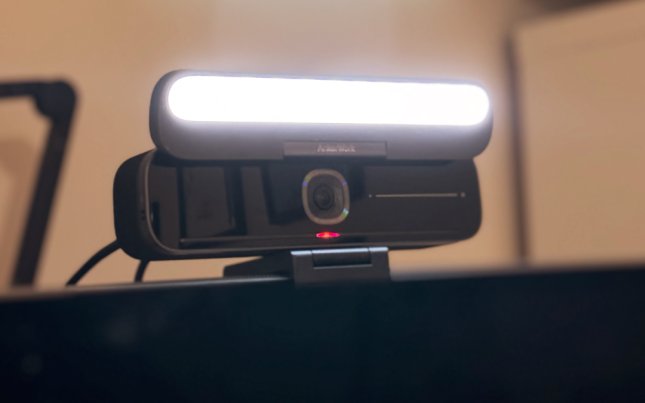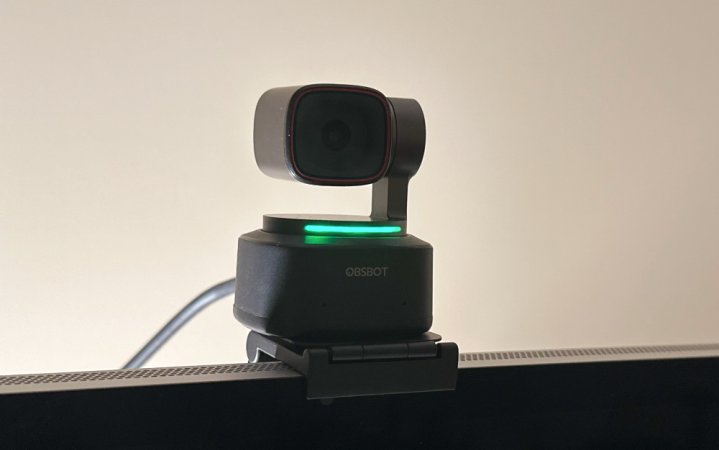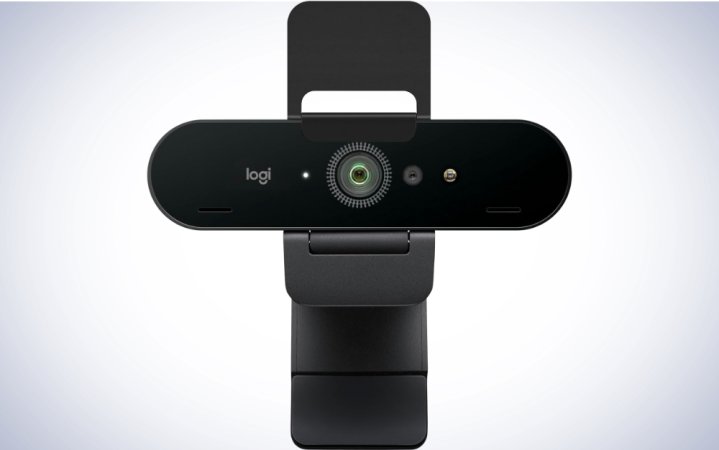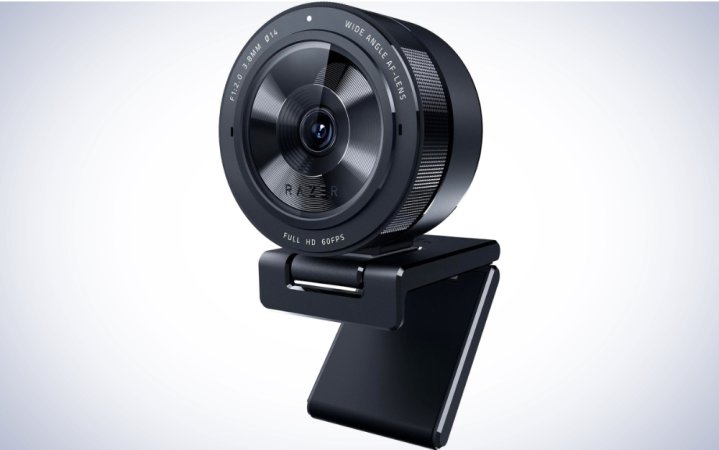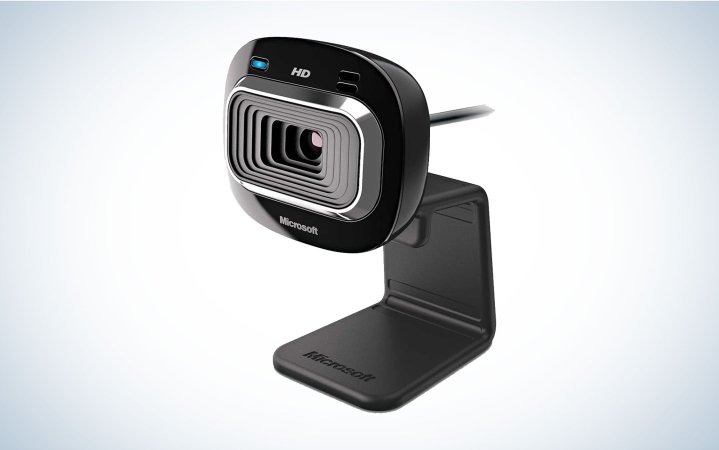We may earn revenue from the products available on this page and participate in affiliate programs. Learn more ›
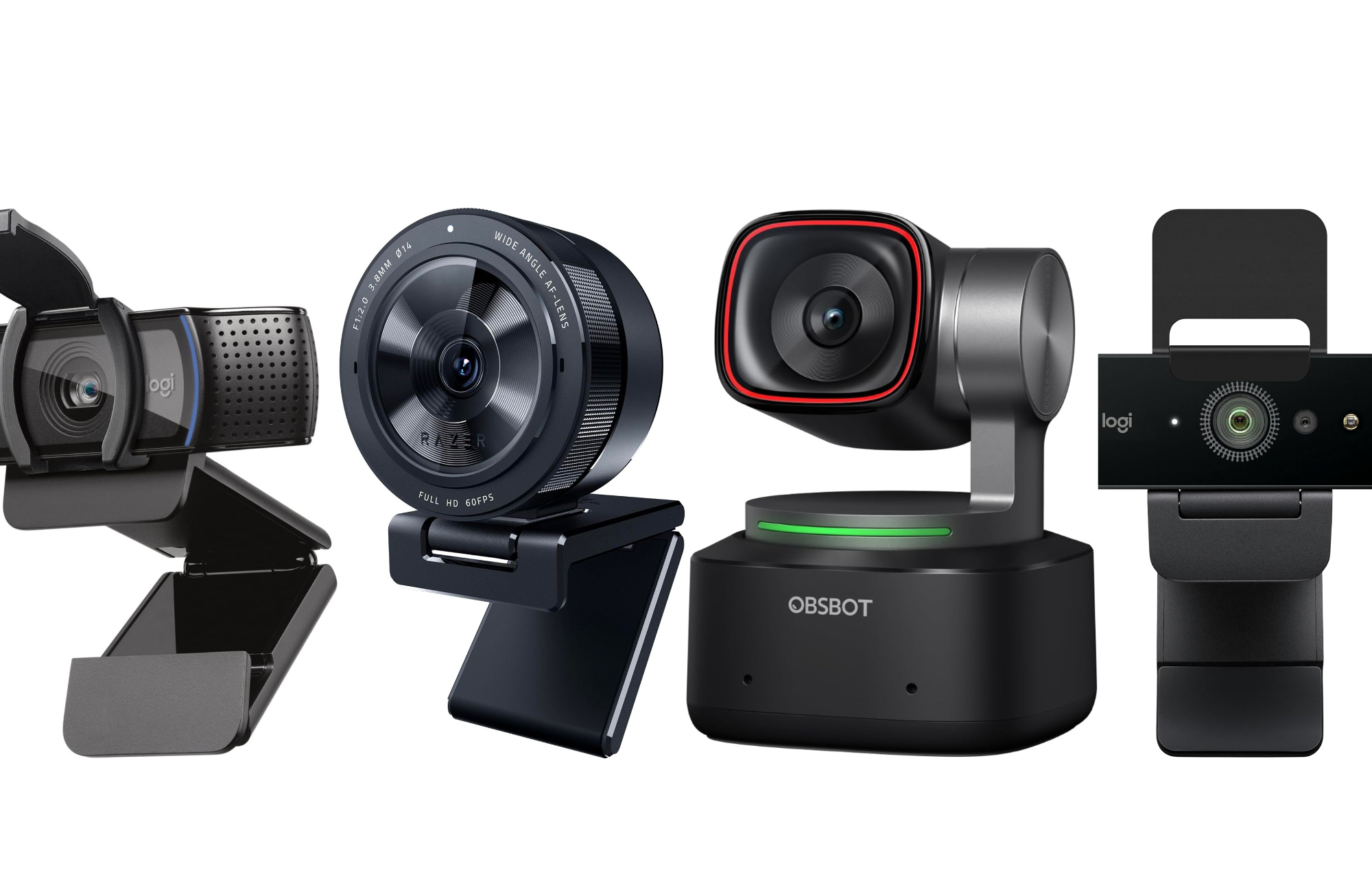
With so many people working remotely or hybrid, webcams have gone from being a useful PC accessory to a must-have gadget. Many laptops have built-in webcams, but using a dedicated webcam gives you a clearer picture and more customization options for video calls. Other important features, like improved low light performance, autofocus, and bokeh (background blur), also differentiate dedicated webcams from laptop or monitor cameras. The best webcams will give your fellow participants a better look at you and allow you to come off as far more professional.
- Best overall: Logitech C920e
- Best with built-in lighting: AnkerWork B600
- Best for streaming: OBSBOT Tiny 2 4K
- Best 4K: Logitech Brio
- Best for content creators: Razer Kiyo Pro
- Best budget: Microsoft Lifecam HD-3000
How we chose the best webcams
Most laptops—and even some external monitors—have built-in webcams, but the restricted angles and resolutions often mean we’re not looking our best on calls. There are DIY solutions if you’d like to eke out the most performance from any webcam, which you should also consider when deciding whether you upgrade today or down the line. But if today is the day, we’ve compiled some top-notch webcams for you to pick from, combining personal experience with user and peer recommendations. We stuck with reputable, well-known brands to make sure that the web cameras we selected would provide consistent experiences to most users and that they would be available at common electronics stores, both online and physical. Further, we sought to pick a variety of webcams with different features to fit a host of needs for different users.
Best webcams: Reviews & Recommendations
Now that you know how to pick out a webcam, let’s talk about the best of the best. These computer cameras should address the different needs of different types of users, from streamers to office power users to casual video callers. Frankly, if you pick a webcam from a reputable brand, it’s tough to make a bad choice. But it’s just as difficult to make the best choice.
Best overall: Logitech C920e
Best webcam for most people
The Gold Standard
Pros
- Affordable without sacrificing quality
- Full HD video
- Good autofocus
- Included privacy shutter
Cons
- Built-in mic isn’t great
Why it made the cut: The Logitech C920e is a fully featured video conferencing workhorse.
Specs
- Max Video Resolution and Framerate(s): 1080p at 30FPS
- Sensor Type: 3 megapixels
- Focus Type: Autofocus
- Mic Type: Stereo
- Field of View: 78°
- Lens cover: Yes
- Additional Software Required: Logitech Capture (free)
- Mounting Options: Monitor or Tripod Mount
- Price: $67.90
Logitech’s tech accessories, from mice and keyboards to computer speakers, are generally well regarded for their quality-to-price ratio, and its C920e webcam is no different. The 1080P webcam will set you back well under $100 and offers all the essential features you’ll need to justify the upgrade from your laptop or monitor’s built-in computer camera.
Its resolution is solid—1080P is still the standard in the webcam world, though 4K models are becoming increasingly popular—and it has a pair of built-in microphones, which is handy in a pinch (or if you keep your laptop lid closed). It lacks cutting-edge AI features like face detection, but the C920e does support autofocus, which will keep your face looking sharp if you move around.
Lights on the outer rim of the external camera’s lens enclosure shine blue when the camera is recording, which is a good privacy feature, or reminder to close your video chat window. If you prefer even more privacy, you can pull down the webcam’s attachable physical privacy shade to guarantee there’s no snooping going on. The Logitech C920e is a perfectly good entry-level webcam that’s equally suited for business and personal video calls. It’s going to be a big upgrade over your computer’s built-in camera, and a tech accessory you should never have to upgrade unless your needs change substantially.
Best with built-in lighting: AnkerWork B600
Best webcam with built-in lighting
Light Up Your Life
Pros
- Large light for a lot of coverage
- Higher-than-HD resolution
- Multiple microphones
Cons
- Price
Why it made the cut: The AnkerWork B600’s built-in light bar is bright and stands out from the competition.
Specs
- Max Resolution and Framerate(s): 2K at 60FPS
- Sensor Type: 4 megapixels
- Focus Type: Autofocus
- Mic Type: Four-microphone array
- Field of View: 95°
- Lens cover: Yes
- Additional Software Required: Ankerwork (free)
- Mounting Options: Monitor or Tripod Mount
- Price: $199.99
Good lighting is arguably more important to ensuring a webcam’s video quality than its resolution, but not many of us are lucky enough to work from sun-soaked rooms. AnkerWork’s B600 solves that issue by having a wide light bar, which spans the entire width of the admittedly wide webcam to ensure even lighting. Some webcams have a light ring, but we like the larger bar because it’s bigger and brighter.
While the B600 was designed for use in challenging lighting situations, its marquee feature is hardly the only reason we’re recommending it. Its 2K resolution is higher than most webcams, and better yet, it can record and stream video at up to 60 frames per second at that level. Similarly, Anker made the most out of the B600’s width by building in four microphones and a pair of speakers into the webcam. When you’re done using it, the light bar flips down over the camera’s lens, which guarantees privacy.
In our tests, the video quality from the B600 was very clear and didn’t require external light, even in a completely dark room. Through the free AnkerWork software, we could change the light bar’s brightness and color temperature—from cool and blue to warm and amber—to better match our clothes and skin tone. You can also change the light bar’s brightness by swiping the webcam’s touch-sensitive front face. There’s a line you can use as a guide, so you’ll know where to swipe. For the best results in an extremely dark room, you’ll want your face close to the camera for the maximum exposure to light.
The software also allows you to enable automatic light adjustment, which will use AI to automatically highlight your face more brightly using both the light bar and software. The B600’s maximum field of view is 95 degrees, but you can adjust it to 78 and 65 degrees if you’d like a tighter crop. On the audio side, we could definitely detect better sound than our laptop’s built-in microphones could provide at the same distance. If you keep your laptop in clamshell mode while connected to a monitor, this hardware feature will prove invaluable.
There’s no getting around the AnkerWork B600’s relatively high price, but the guarantee of good lighting is hard to pass up.
Best for streaming: OBSBOT Tiny 2 4K
Everything You Need
Pros
- Excellent image quality
- Useful AI features
- A fully-loaded app
Cons
- Price
Why it made the cut: The most versatile webcam we’ve tested is also a must-have for serious streamers.
Specs
- Max resolution and framerate: 4K at 30fps, 1080p at 60fps
- Sensor type: CMOS
- Focus type: Autofocus
- Mic type: Dual noise-reduction
- Field of view: 180°
- Lens cover: No
- Additional software: OBSBOT Webcam
- Mounting options: Monitor or tripod mount
- Price: $329
OBSBOT’s Tiny 2 4K typifies the idiom “you get what you pay for,” and it’s the streaming webcam by which all of our other webcams are judged. Its 1./1,5″ CMOS sensor takes in a lot of light, so you’ll get a less grainy image in lower-light situations, and features like PixGain HDR (high dynamic range) ensure the colors of everything it’s recording looks accurate. If you stream in 4K, your viewers will appreciate the level of crispness of your video, especially if the window is shrunk into only a corner of the screen while playing video games.
The Tiny 2 4K’s big innovation is AI, which allows the camera’s lens, which sits on a magnetic base, to rotate, keeping you in frame. If you move, the camera moves to match you automatically, with no intervention required. If you give presentations on stream or want to use the Tiny 2 4K as a gaming camera, this can be a big help. When the camera is no longer needed, it flips downward. OBSBOT’s excellent hardware is paired with a truly incredible piece of software, which gives you complete control over features like noise reduction, camera positioning, and filter application. It’s by far the deepest webcam software we’ve gotten our hands on, and makes the Tiny 2 4K appealing to serious streamers.
This webcam’s $350 price tag is steep, but you’re getting a lot of features for the price. If you’d like a webcam for streaming that’s guaranteed to make you look your best, OBSBOT’s Tiny 2 4K is the best choice.
Best 4K: Logitech Brio
Best 4K webcam
Pour Over Every Pore
Pros
- 4K video
- Windows Hello support
- Adjustable field-of-view
Cons
- Price
Why it made the cut: With 4K resolution, the Logitech Brio is the best resolution you can get on a webcam.
Specs
- Max Resolution and Framerate(s): 4K at 30FPS, 1080p at 60FPS, 720p at 90FPS
- Sensor Type: CMOS
- Focus Type: Autofocus
- Mic Type: Omnidirectional Stereo
- Field of View: 90°
- Lens Cover: Yes
- Additional Software Required: Logitech Capture (Free) or Logitech Tune (Free)
- Mounting Options: Monitor or Tripod mount
- Price: $168.21
If you’re constantly on camera for work, you’ll want to step up from the Logitech 920e to its bigger sibling, the Brio. This is a 4K webcam, which offers a big jump in video quality—mostly by way of clarity—while retaining all of the key features that made us recommend Logitech’s more entry-level model. The Brio has a lot of neat audio and video features, which are nice to have if you record in more challenging environments. Its noise-canceling microphone will tamp down unwanted sounds—sirens, buzzing fridges, external hard drives—so the people on your call can hear your voice more clearly. It won’t compare favorably to using a dedicated microphone, but it’s still nice to have.
On the video side, the Brio’s high resolution is complemented by automatic light correction, which will adjust how you look based on the conditions in your room. It won’t save your skin the same way the AnkerWork B600 will in an extremely dark environment, but it’ll compensate for weak lights. One feature the Brio and AnkerWork’s webcam have in common is the ability to switch between three different focal lengths to get the right crop. This can be adjusted through Logitech’s free software suites.
This webcam was also certified to work with Windows Hello, which allows you to log into a PC using facial recognition. If you work with Windows, the Brio can expedite your login time after a restart. On the other end of the spectrum, the Logitech Brio’s built-in privacy shade can cover its lens when you don’t need to video conference anymore. If you don’t mind the cost of upgrading from an HD to a 4K external camera, the Logitech Brio is an excellent webcam for any use case.
Best for content creators: Razer Kiyo Pro
Best webcam for content creators
For Zoom and TikTok Alike
Pros
- Adjustable field of view
- Adaptive lighting sensor
- HDR support
Cons
- HDR limits frame rates
Why it made the cut: As the best webcam for content creators, the Razer Kiyo Pro can shoot at a variety of orientations and aspect ratios that other webcams can’t.
Specs
- Max Resolution and Framerate(s): 1080p at 60FPS
- Sensor Type: 1/2.8″ Sony STARVIS
- Focus Type: Autofocus
- Mic Type: Omnidirectional Stereo
- Field of View: 103°
- Lens cover: No
- Additional Software Required: Razer Synapse (Free)
- Mounting Options: Monitor or Tripod mount
- Price: $119.99
If you’re creating videos for social media and don’t want to invest in a vlogging camera, Razer’s Kiyo Pro is the solution. The webcam 1080p webcam can record video at up to 60 frames per second and allows you to switch between 80-, 90-, and 103-degree fields of view, so you can get the perfect crop for your shots without getting out of your seat. The camera’s adaptive light sensor will compensate for dim lighting, while its HDR (high dynamic range) support will make colors pop.
Most webcams don’t support HDR, even though everything from TVs to smartphones can play back high dynamic range videos. The only drawback is that enabling HDR will limit the Kiyo Pro’s framerate to 30fps. This is unfortunate but unsurprising given the external webcam’s sub-$200 price tag. On the other hand, the Kiyo Pro’s omnidirectional microphones have no such compromises and can record 16-bit 48kHz audio. Its audio quality will be impacted by the construction and size of your room, but you can expect better-than-average results if there aren’t any loud noises around.
Content creators need reliable hardware to keep their audiences engaged and prevent quality dips from reducing their reach. The Razer Kiyo Pro was designed with these uses in mind, and it’s a great option whether you’re a casual lifestyle blogger or want to dip your toe into livestreaming.
Best budget: Microsoft Lifecam HD-3000
Best budget webcam
Plug-and-Play Not Pay
Pros
- Price
- Mount can act as a stand
- Autofocus is an unexpected feature for a webcam in this price range.
Cons
- No bells and whistles
Why it made the cut: If your needs are basic, you don’t need pro-grade features or the price that comes along with them.
Specs
- Max Resolution and Framerate(s): 720p at 30FPS
- Sensor Type: CMOS
- Focus Type: Autofocus
- Mic Type: Omnidirectional
- Field of View: 68.5°
- Lens Cover: No
- Additional Software Required: None
- Mounting Options: Monitor mount
- Price: $24.02
There’s an entire swath of cheap webcams available, but Microsoft Lifecam HD-3000 is the one we recommend to anyone looking for an inexpensive upgrade to their home office setup. The HD-3000 costs well under $30, and its tech specs reflect that. It tops out at 720p—less than full HD—and can only record video at 30 frames per second. It does have autofocus, which we wouldn’t expect from a webcam in this price range.
Another plus to the HD-3000 is its relatively diminutive size. This is the smallest webcam we’re recommending, which means it’s also the easiest one to travel with if that’s one of your concerns. Microsof’s Lifecam HD-3000 is a basic tool to get your video calls done without breaking the bank. If your needs and budget are modest, this webcam will still outclass the one built into your laptop.
What to consider before buying webcams
When preparing to pick a webcam, you’ll want to think about how you plan to use it. Are you going on Zoom calls every day at work? Maybe you’re looking to start streaming on Twitch? Do you only need a webcam for streaming, or will you also use it to record videos and take photos? Some key factors and features may lead you to one webcam or another as you figure out your specific needs.
Resolution
Picking the right webcam starts with its resolution. You want your camera to create the clearest possible picture for the other end. You don’t want to use a resolution lower than 720p, as it will appear grainy and pixelated. A 720p picture is readable, but not especially sharp; 1080p, often referred to as “Full HD,” is the sweet spot.
Above 1080p, you will get diminishing returns, especially for streaming and video calls. In general, 4K webcams are expensive, and many video call services, such as Zoom, do not support 4K video. A 4K webcam is really only necessary if you’re recording footage for a film project or know for certain that you need that additional clarity.
Framerate
The other video spec you’ll want to check after resolution is frame rate, measured in frames per second (FPS). This is the speed at which the camera captures images. For reference, most films are at 24FPS, TV runs at 30FPS, and gamers prefer 60FPS for fast-paced gaming. Most webcams record at 30FPS when set to their highest resolution settings, though 60FPS isn’t unheard of. Some webcams may split the difference and offer 60FPS recording, but only at a lower resolution. In those cases, we’d argue you should prioritize resolution for your webcam and stick with 30FPS.
Built-in microphone
Many webcams come with a built-in microphone, allowing them to be a one-stop shop for video calls. Though some webcams get better audio quality than others, they generally tend to be clear enough for conversation but don’t deliver the crisp, clean audio of dedicated USB microphones or an interface with a standalone mic. If you’re streaming or care about delivering the best possible audio in video calls, you will likely need a separate mic, but most webcams are fine for standard meetings and chats.
Physical privacy options
A camera plugged into a compromised computer can quite literally be a window into your home. There are plenty of measures to take to avoid someone hijacking your webcam, such as downloading one of the best antivirus suites, but the simplest fix is often best. Many webcams come with physical lens covers to curb how much access a digital intruder can get. If the camera is physically blocked, it can’t be used to spy on you.
Ease of setup
A webcam doesn’t need to be a complicated piece of equipment. Some allow for advanced configuration to get the best possible picture, but the best ones get you pretty close without any tinkering. If you’re planning to produce livestreams or cut video, you may want to check and make sure the camera plays nice with all the app(s) you plan to use.
Lighting
When perfecting your video call setup, a good webcam helps but can only go so far. To look great on Zoom, you need a well-lit room. There are lots of options for improving and evening out your lighting—sometimes moving a couple of lamps around will do the trick. But if your room is dark, or your face isn’t properly lit, you might consider buying a ring light to brighten you up. There are even webcams with built-in lighting that might help.
FAQs
It depends on what webcam you buy, but usually, webcams are better than your laptop camera. Where built-in webcams are usually small and discreet, a dedicated webcam’s larger frame and lens allow for better image quality. There’s room inside your webcam for a lens stack, a set of multiple lenses that can produce a clearer picture under a wider set of circumstances. As a general rule of thumb, a dedicated piece of hardware will deliver better results than a built-in component.
A 720p webcam isn’t ideal, but will get the job done in many cases. It’s good enough for home use and can get the job done if you just need your picture to look good in a little box in the corner of a screen. If you’re going to create content or lead virtual meetings in a professional setting—something where you want to make a strong impression—we’d recommend the sharper picture of a 1080p webcam.
Nearly every webcam is compatible with major video conferencing platforms, including Zoom, Microsoft Teams, and Discord. In some cases, you may experience software issues with low-quality cameras from lesser-known brands, but generally speaking, your webcam should work with Zoom.
This depends on their resolution, AI features, microphones, and other hardware. Our recommendations range in price from $25 to well over $300.
Webcams are unlike phone and standalone cameras in that their quality is quantified in resolution rather than megapixels. For the best video quality, choose a webcam that’s 1080p or, if you can stretch your budget, 4K.
Yes. A 4K webcam will record a clearer picture than an HD (1080p) webcam can. The 4K camera’s increased resolution can capture both more of an area and more detail. Because 4K webcams are more expensive, they also typically have better low-light performance and autofocus capabilities.
Final thoughts on the best webcams
- Best overall: Logitech C920e
- Best with built-in lighting: AnkerWork B600
- Best for streaming: OBSBOT Tiny 2 4K
- Best 4K: Logitech Brio
- Best for content creators: Razer Kiyo Pro
- Best budget: Microsoft Lifecam HD-3000
The standard for webcams has reached a pretty high bar. Nothing on this list goes below 720p resolution or 30FPS for standard functionality. All but one offer built-in microphones and are compatible with major video conferencing and streaming software. It’s hard to get a bad webcam. Finding the best webcam for your needs is a bit tougher, but the Logitech C920s set the standard for getting a quality picture with ease across every app and platform. As you can see, there’s room to optimize for specific uses, particularly streaming video games on Twitch, but that’s a discussion for another time.

